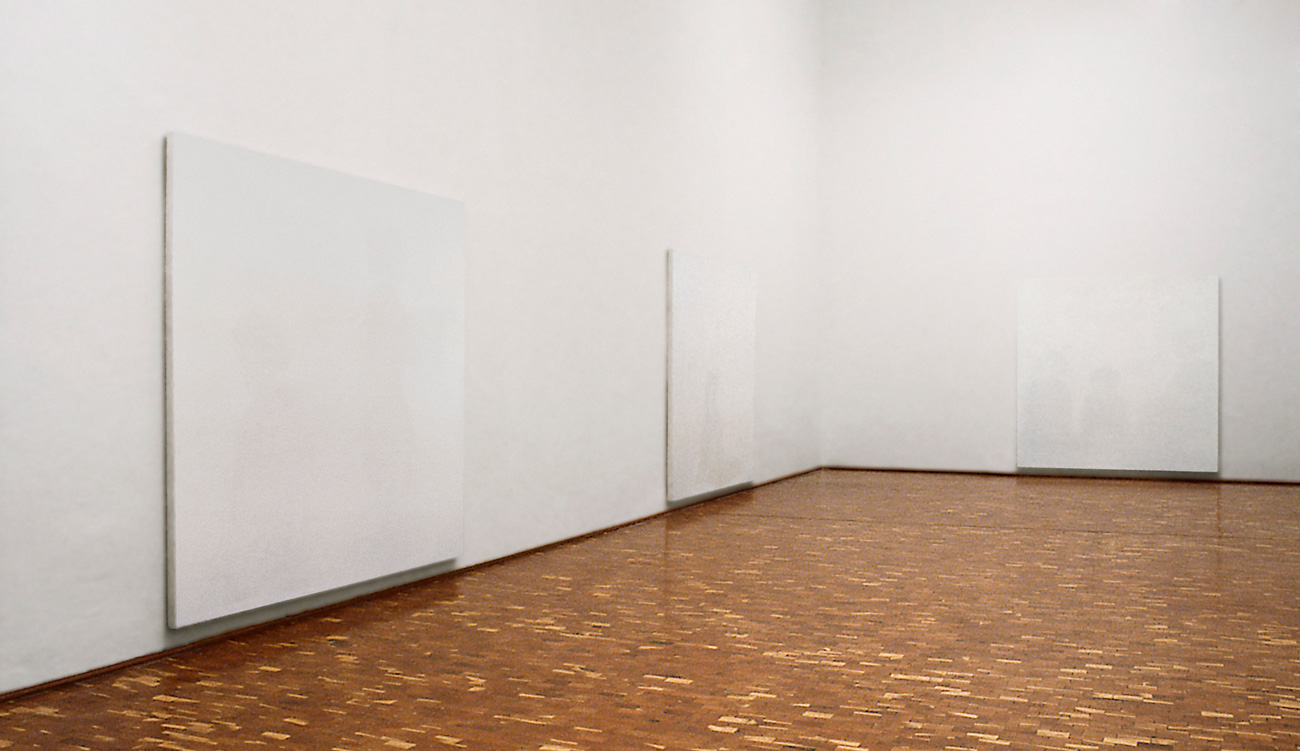Geisha
1992 – 1993

Is there still a chance for visual narrative to prevail through the tricks of pigment? The first time I saw Jusidman’s Geisha paintings, I realized that the answer is yes. My surprise was all the greater because I had already heard how the paintings work, which only goes to show the difference between knowing how a thing will look and actually seeing it. At first I didn’t even identify them as pictures: They appeared as a set of white quadrangles against the wall, like virgin canvases. (I can’t help smiling at such a metaphor of visual chastity.) Only after a while did my pupils dilate and my eyes adapt enough to detect the subtle variations of white as the stylized profiles, vacant stares, and frozen gesticulations of geisha girls swam up to me. So far one might think Magic Pictures!—note the trick, applaud the illusion, drop a coin, and leave. But here’s the difference: Once revealed, Jusidman’s paintings set up a conflict between the qualities of their content. The viewer drifts from the shock of access into an ambiguous emotional state as diffuse as the undifferentiated blankness of the first few seconds. Genuine or otherwise, these geishas are the illusion of an illusion.
—Cuauhtémoc Medina,
The Spectator’s Dictatorship, 1995
The Geisha paintings continue my exploration of the meeting of flesh and pigment on the picture plane, yet this time in relation to the phenomenon of painterly seduction. I address these works primarily to the sophisticate who has become accustomed to monochrome painting. Even though it has been an extremely powerful and coveted device throughout the history of art, painterly seductiveness often has been regarded with a great deal of suspicion by the avant-garde, to the extent that to say that a painting is seductive is to say that it is deceptive. However, the fact that paintings can be seductive is one of the reasons why they are unique among objects of desire. One doesn’t fall for a painting if from the outset one doesn’t want to, nor would one if the painting desists from soliciting one’s attention in the first place. By understanding seduction as complicity between a capable seducing agent and the will of the seduced, painterly seductiveness remains a path through which paintings can generate and sustain lasting relationships with willing individuals.
—Yishai Jusidman
src="../wp-content/uploads/yishai-jusidman-geisha-1.jpg">
src="../wp-content/uploads/yishai-jusidman-geisha-2.jpg">
src="../wp-content/uploads/yishai-jusidman-geisha-3.jpg">
src="../wp-content/uploads/yishai-jusidman-geisha-4.jpg">
src="../wp-content/uploads/yishai-jusidman-geisha-5.jpg">
src="../wp-content/uploads/yishai-jusidman-geisha-6.jpg">
src="../wp-content/uploads/yishai-jusidman-geisha-10.jpg">
